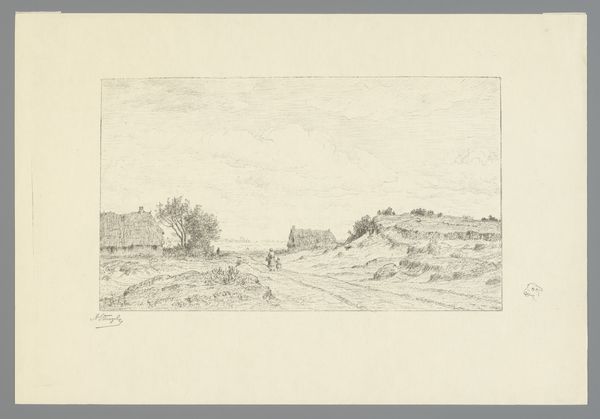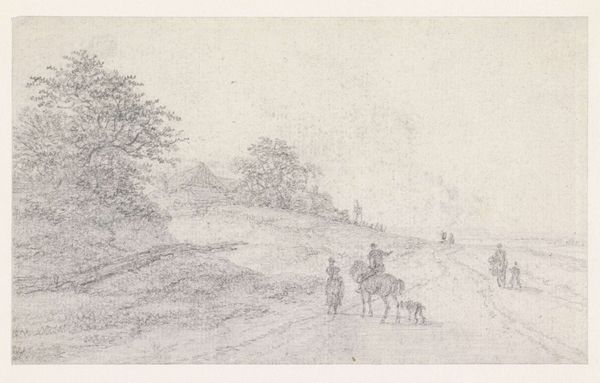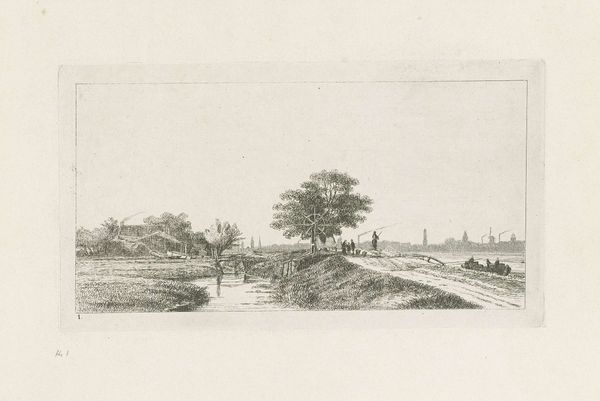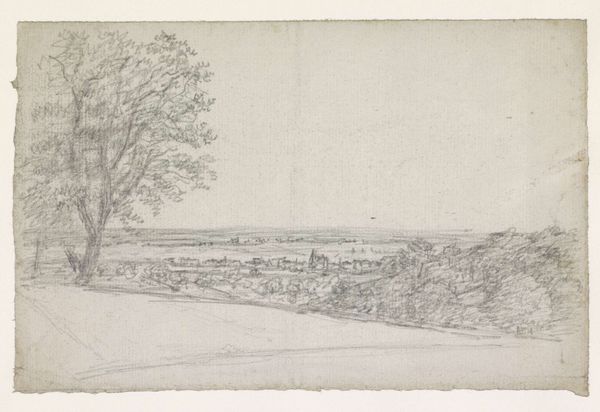
drawing, paper, pencil
#
drawing
#
landscape
#
paper
#
romanticism
#
pencil
#
pencil work
#
realism
Dimensions: height 101 mm, width 157 mm
Copyright: Rijks Museum: Open Domain
Editor: Here we have Georges Michel's "Landweg tussen muren," dating sometime between 1773 and 1843. It's a pencil drawing on paper. It strikes me as a rather bleak landscape, with imposing walls framing the road. What do you see in this piece? Curator: I see a critique of enclosure and the policing of space. Look at how the walls dominate the landscape, effectively corralling the figures within. Michel’s choice to depict this scene, the specific rendering of those figures, and the looming, shadowed architecture… I wonder what class of people occupied each side of those walls, and how it feels to traverse this liminal, monitored space? How do you think this resonated with audiences of the time? Editor: That's an interesting point! I was focusing more on the aesthetic aspects, like the use of light and shadow, but I see what you mean about the social commentary. Maybe the walls represent societal barriers? Curator: Precisely. Think about the historical context—the rise of industrialization, urbanization, and the increasing divide between the wealthy landowners and the working class. Michel might be commenting on the very real physical and social divisions that were becoming increasingly apparent, even violently reinforced. Where might you look to confirm these initial thoughts about class divides? Editor: I guess looking into the artist's life and the social climate of France at the time could give us some clues. Curator: Exactly. Understanding Michel’s place within the Romanticism movement helps. Even Romanticism engaged with contemporary life even if via pastoral idealism, the reality remained clear. This helps unpack the artwork’s historical meaning. And how these concerns may still be relevant in our present context… the structures of power still dictate who can move freely and safely through space. Editor: I never thought of landscape art having so much to say about social issues. This has totally shifted my perspective. Curator: And that's the beauty of art, isn't it? It encourages us to question the world around us and reflect on our place within it. It also shows us that aesthetics and ethics are almost always intertwined.
Comments
No comments
Be the first to comment and join the conversation on the ultimate creative platform.













